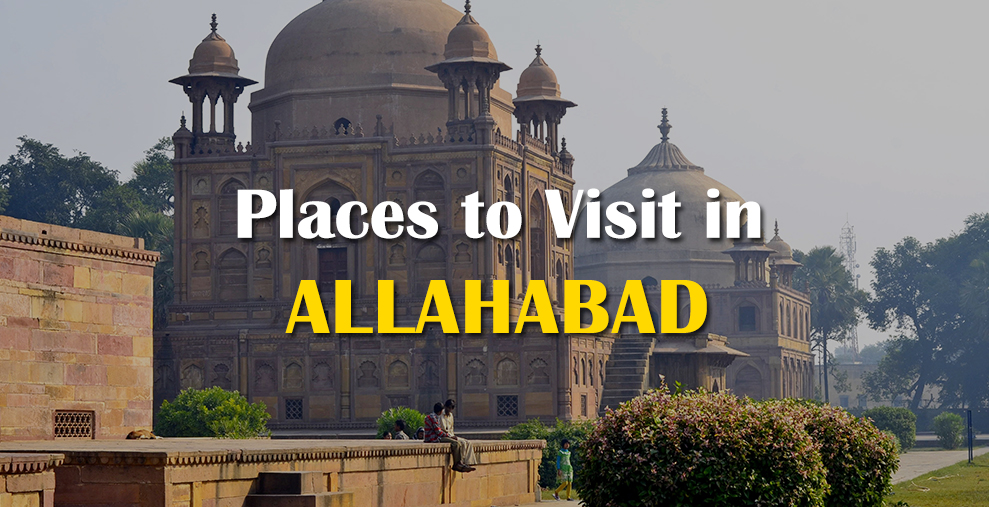Allahabad’s influence over India’s spiritualism, history and politics cannot be overstated. Known in Hinduism as the site chosen by the creator of the universe, Lord Brahma, as the ‘king of all pilgrimage centers’, this where both the holy Sangam and the Kumbh Mela take place to this day. It was also referred to as Ilahabad by Akbar, one of India’s most majestic and powerful emperors, and it has since been called home by two of India’s Prime Ministers. Allahabad is a shining, many-faceted jewel of Indian culture, full of ancient tombs, beautiful people, brilliant restaurants, gorgeous parks and more.

Allahabad
1. Triveni Sangam
Known as the most sacred spot in Allahabad, Triveni Sangam is a point where three rivers of religious importance- Ganga, Yamuna and the Saraswati meet. People can easily differentiate between the rivers as they maintain their original colours and this convergence point is considered as an auspicious junction as according to the Hindus, a bath here will help them wash away their sins and free them from the cycle of rebirth. This place is also super crowded during the religious festival- Kumbh Mela.
2. Allahabad Museum
Considered as one of the most organised and well-maintained museums of India, Allahabad Museum is home to a great collection of artifacts and acts as a research centre for historians, archaeologists as well as academicians. Apart from this, the museum also has become the only one in the country which generates its own energy with solar power. This museum is funded by the Ministry of Culture, India.
3. Allahabad Fort
The ancient fort was said to have been originally built by the great emperor Ashoka but was repaired by the Mughal Emperor Akbar in 1583. The Allahabad Fort is located near the triveni sangam confluence and is the largest fort built by Akbar. The fort comprises of high watchtowers that guard the 3 galleries in the fort complex. The important monuments and buildings inside are the Zanana palace for the women, the Saraswati Koop which is considered as the source of the Saraswati River and a 3rd century BC Ashoka Pillar.
4. Anand Bhavan
Anand Bhavan was constructed in the 1930’s by the Indian leader Motilal Nehru as the Nehru Family residence. The building was constructed as the former residence of the Nehru Family known as the Swaraj Bhavan was donated to the Indian National Congress. The building was donated to the Indian Government by Indira Gandhi in 1970 and is today a house museum that depicts the life and times of the Nehru family. It also houses the Jawahar Planetarium which was built in 1979 and is a must visit.
5. Khusro Bagh
The walled garden is a home to three mausoleums which are built in the Mughal style of architecture. The three tombs belong to the eldest son of the Mughal Emperor Jahangir, Khusaru Mirza and his first wife Shah Begum and his daughter Nithar Begum. The name Khusro Bagh is named after Khusaru Mirza who rebelled against his father leading to his death and his burial along with his family in the three tombs. The three tombs are fine specimens of Mughal arts and architecture and are decorated with stone carvings and motifs.
6. Akshayavat
Akshayavat, also known as the “indestructible Banyan tree”, is a holy tree located near the Patalpuri Temple at the Allahabad fort. According to a famous legend, when a sage asked Lord Narayana to show him divine power, the Lord flooded the world just for an instant and then made the water disappear again.
However, during the floods while everything else drowned, only the top of the ‘Akshayavat” could be seen. The banyan tree is therefore considered to be an immortal tree. The fort is today occupied by the Indian army. However, people can visit the temple and the tree after seeking permission from the army centre there. During the Kumbh Mela though, the site is open to all pilgrims.
